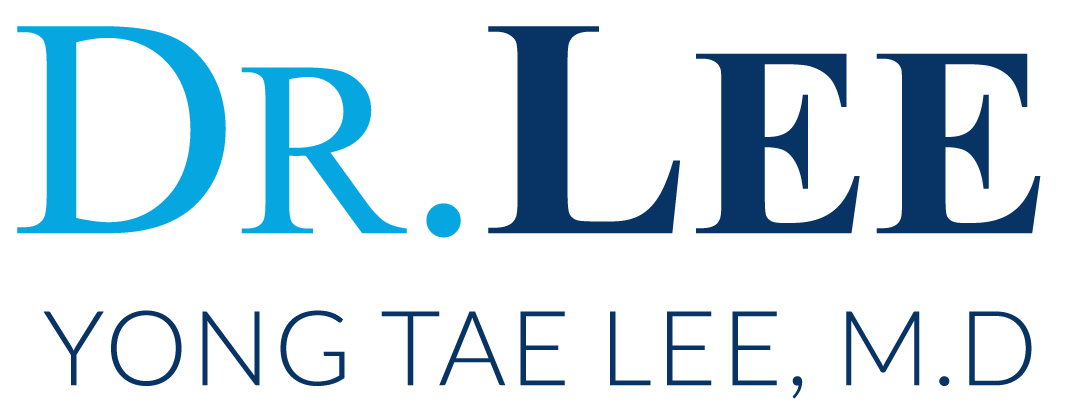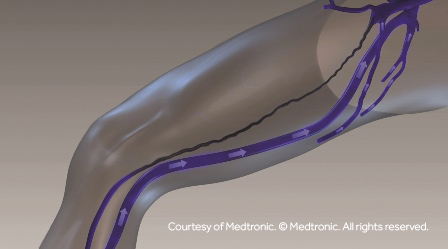– Varicose Veins –
[ Resolve the Issue of Varicose Veins ]
Veins are the vessels that return blood to the heart once it has circulated through the body (as opposed to arteries, which carry oxygen-rich blood from the heart to the body). They have one-way valves that help keep blood flowing in the proper direction. If these valves stop functioning the way they are supposed to, blood can flow backwards and pool in the vein, causing it to stretch.
Unlike spider veins, which are primarily superficial, varicose veins develop in deeper tissues. Varicose veins are swollen, dark blue or purple blood vessels that you can see and feel beneath the skin. The vessels that develop into varicose veins are larger and therefore more prominent when problems occur. Varicose veins form when the valves within a vein weaken and allow some blood to flow backward. The vein weakens under the additional strain and balloons outward, bulging under the skin surface. This venous disease is characterized by twisted cords of veins that bulge above the skin’s surface. Common areas in which varicose veins occur include the calves and thighs.
As much as 55% of American women develop varicose veins, but men may experience this problem, as well. According to research, up to 45% of men in our country struggle with some type of problematic vein issue in their lifetime. Patients with varicose veins may develop aching, throbbing, cramping, itching, ulcers and other symptoms that may indicate a need for medical attention.
Causes and Risks Factors of Varicose Veins
While varicose veins can affect nearly anyone, they tend to occur more often in patients possessing certain risk factors, including:
Older age- 50 percent of women over the age of fifty have varicose veins.
Genetics- Approximately 50 percent of patients with varicose veins report that a close family member also has this condition.
Hormones- Fluctuating levels of progesterone and estrogen have been identified as a primary factor in the formation of varicose veins in women.
Pregnancy- In addition to the hormonal changes during pregnancy, varicose veins may develop due to increased venous pressure from the growing uterus.
Obesity- Excessive weight may also place excessive pressure on vessels, leading to valve weakness.
Prolonged standing or sitting- Circulation is promoted by movement. When we sit or stand for too long, blood may more easily pool in the lower extremities.
Lack of physical activity
Varicose Veins and Blood Flow
If you notice one or more bulging veins on your legs or another area, this is an indication that valve damage has occurred to that vessel. Veins transport blood and nutrients throughout the body, and then back to the heart. Muscle contractions in the legs help to progress the upward movement of blood against gravitational forces. To keep blood moving in the right direction, veins have one-way flaps called valves. Weakness in a valve allows blood to accumulate, causing the vein to swell.
What are the symptoms of varicose veins?
The primary indicator of varicose veins is the obvious appearance of bulging vessels. Additional symptoms include:
Restless legs
A sensation of “heaviness”
Swelling
Cramping, throbbing, or aching pain that worsens with inactivity
Itching
Skin discoloration (in severe cases)
Generally, varicose veins do not pose a serious health threat. However, certain conditions may result from untreated venous insufficiency, including bleeding, skin ulceration, superficial blood clotting, or deep vein thrombosis, or deeper clots.
the following as varicose vein treatment:
Find Relief From Varicose Veins
Medtronic’s CVI solutions are designed to best meet your treatment preferences.
The ClosureFast™ procedure uses controlled and consistent heat to close the diseased vein.
The VenaSeal™ closure system uses a proprietary medical adhesive to close the diseased vein.
How can I prevent varicose veins?
While there is no surefire way to prevent varicose veins from developing, there are certain lifestyle changes that can be made in order to reduce your risk of developing this condition. This may include:
Exercising regularly
Maintaining a healthy weight
Wearing compression stockings
Elevating the legs
Avoiding sitting or standing in one position for too long


